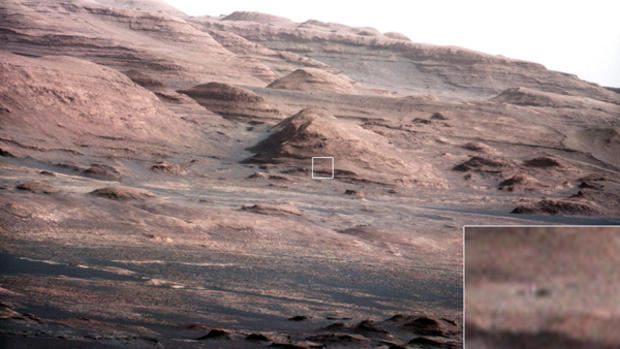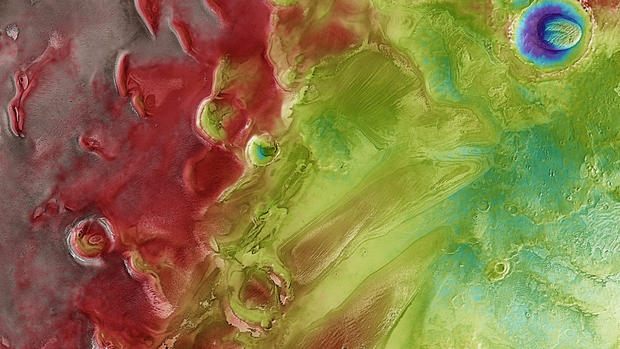Astronauts face radiation threat on long Mars trip
Astronauts traveling to and from Mars would be bombarded with as much cosmic radiation as they'd get from a full-body CT scan about once a week for a year, researchers reported Thursday.
That dose is enough to raise their cancer risk by about 3 percent, but experts caution that there are many uncertainties about the space environment's effects on the body.
As plans for deep space exploration ramp up, radiation is a big concern - from high-energy galactic cosmic rays spewed by distant supernova explosions to sporadic bursts of charged particles hurled by the sun. Earth's magnetic field helps to deflect much of that harmful radiation.
NASA aims to send a crew to orbit the red planet by the mid-2030s. Private outfits like Inspiration Mars - backed by NASA engineer-turned-space tourist Dennis Tito - are seeking volunteers for a Mars flight.
There have been previous efforts to gauge the radiation risk for future Mars travelers, but the best estimate is coming from NASA's Curiosity mission. Tucked inside the rover when it launched in 2011 was a radiation sensor that took readings during the 8 1/2-month cruise to Mars.
From those figures, scientists calculated a spacefarer's radiation exposure for a quicker six-month voyage in a similarly shielded spacecraft. Roundtrip: about 662 millisieverts. That's a sizable chunk of an astronaut's career cap of 1,000 millisieverts which many international space agencies use to limit the accumulated radiation dosage in space. NASA's threshold varies slightly depending on age and gender.
The dose is similar to getting a full-body CT scan every five or six days, said lead researcher Cary Zeitlin of the Southwest Research Institute in Boulder, Colo.
The estimate is just for zipping there and back; it doesn't include time spent on the Martian surface, which would add to an astronaut's exposure. How much more would depend on length of stay and available shelter.
"You'd like the radiation exposure to be lower, but it is what it is," said Dr. Norm Thagard, the first American to fly on the Russian space station Mir, who had no role in the research. "Given the importance of such a mission, the mission should be done."
The analysis appears in Friday's issue of the journal Science. The amount of radiation likely won't change unless there's a rocket engine that can speed up the interplanetary ride, researchers said.
"You want to get there as quickly as possible" to reduce radiation exposure, said Don Hassler, scientist in charge of the radiation instrument aboard Curiosity.
The radiation dose on a Mars trip would be higher than what crew members cocooned inside the International Space Station typically face - about 200 millisieverts per year. By contrast, people on Earth are typically exposed to about 3 millisieverts a year.
Curiosity flew to Mars during a period of low to moderate solar activity. A manned mission that launches during a solar flare or storm would encounter more radiation. Researchers said astronauts may want to take cover in a safe room aboard the spacecraft when the sun is active, but thicker walls may not keep out energetic cosmic rays and may increase launch costs.
Radiation health experts said there are still many unknowns about deep space travel.
"I think any cancer-related risk estimate at this point would be no more than a rough guesstimate," David Brenner, an expert on radiation-induced cancer at Columbia University, said in an email.
Thagard, the former NASA astronaut, said he was exposed to 120 millisieverts during his 115 days in low-Earth orbit aboard Mir. Despite the potential health risks, Thagard said there likely won't be a shortage of astronauts willing to hop on a Mars flight.
Since landing near the Martian equator last summer, Curiosity has continued to track radiation as it rolls across the dusty surface toward its eventual mountain destination. The rover has turned up the best evidence yet of an ancient watery Mars. A separate study published in Science detailed the existence of more than 500 rounded pebbles near its crater landing site - the result of being shaped by long-ago flowing water.

